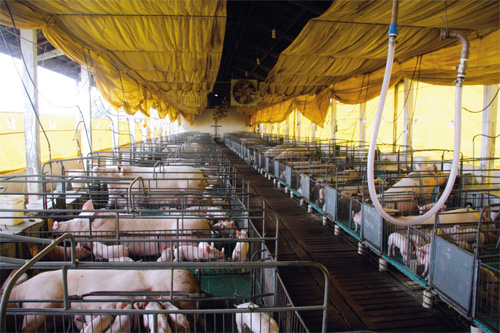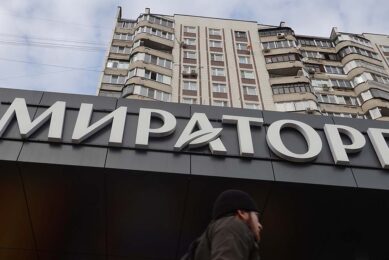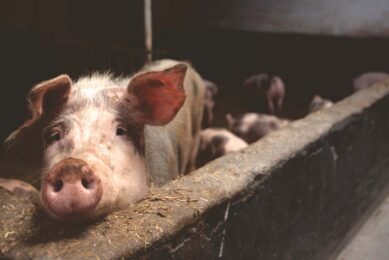First pork exports to China mark new era for Brazil

As is well-known, China is the world’s largest pork consuming country. The Asian country imports about half a million tonnes of pork each year. Until 2011, none came from Brazil. This year, however, for the first time, pork is being exported by Brazil to China. A new era for Brazil’s pork exports has begun.
There are many reasons to assume Brazil is right in hoping to soon sell about 40,000 tonnes of pork to China every year. The most important of them would be that China appears to have reached a production ceiling. If this materialises, China will become Brazil’s fourth or fifth largest market for pork.
In this respect, November 2011 marked an important moment for the pork production industry in Brazil. A Chinese sanitary delegation visited 13 Brazilian abattoirs and judged that three of them were allowed to start shipping pork into China. It was a revolutionary step. Hitherto Brazil had not been able to export to China. Some Brazilian pork however, does reach continental China through Hong Kong. Negotiations to gain access to the Chinese market has been ongoing since 2009.The three packing plants involved are owned by the meatpackers Marfrig, Aurora and Brasil Foods.
Marfrig can export through a plant of its subsidiary Seara in Itapiranga, Santa Catarina state; the Aurora plant is located in Chapeco in Santa Catarina state; the one for Brasil Foods is located in Rio Verde, Goiás state. At the time of printing, about 500 tonnes of pork cuts had been exported to China from Brazil this year. And there could soon be more. A mission from China recently visited three additional packing plants in the state of Rio Grande do Sul. It has yet to be decided whether these plants will be allowed to export as well.
Other export opportunities
As well as China, pork, probably mainly bacon and pork belly, will soon start to be exported to the United States. After many years of negotiation, the US recently agreed to start importing meat produced in Santa Caterina state, the only one in Brazil certified as being free of Foot-and-Mouth Disease (FMD) without vaccination.
Pedro de Camargo Neto, executive president of the Brazilian Pork Exporters Association (Abipecs), says the final touches are also being put to agreements with Japan, the world’s largest pork importer. He says that exports to Japan would have begun in 2011, but the tsunami of March 11, as well as an outbreak of Foot-and-Mouth Disease (FMD) in Japan delayed this start.The decision to import by Japan has been influenced by the fact that the United States also decided to allow Brazilian pork to come in. And where Japan goes, South Korea normally follows, Camargo says. South Korea is also one of the world’s top pork importers.
Brazilian currency
Camargo says that exports have been prejudiced by the growing strength of the Brazilian currency, the real. The currency gained about 40% against the US dollar and other currencies in the past six years.
Bureaucratic problems, as much the fault of Brazil as the importing countries, also affected the start of exports. Concerned with the impact the strong currency had on Brazil’s stagnating manufacturing industry, the Brazilian government involved took a series of steps recently to weaken the real. These included taxing speculative money and cutting interest rates, which had made Brazil an attractive destination as interest rates are generally low. In addition, importing countries sent missions to Brazil to examine packing plants and to check existing procedures.If these measures continue to be in place and, taxes are indeed lowered, Brazilian exports, pork amongst them, will become more competitive again.
This is particularly due to abundant supplies of soymeal and maize, grown at low cost.Abipecs notes that between them the United States, China, Japan and South Korea now import two million tonnes of pork each year. Camargo sees no reason why 600,000 tonnes of that total amount should not be Brazilian. This would mean that output would increase by at least 4% per year, after a number of years in which production stagnated and sales on the buoyant domestic market grew at the expense of exports. Exports would have to grow by up to 25% annually to meet the extra demand.
Russia
Russia was the leading market for Brazilian pork between 2000 and 2009. In these years the country bought more than 50% of the total exported in most years. In June last year, however, it closed its doors to Brazilian pork.
Although exports have since resumed, it caused Russia to be overtaken by Hong Kong as the leading market for Brazilian pork last year. The tendency for Russia is to gradually produce more pork. Nevertheless, the country is likely to continue to import some pork, due to high feed costs and the need to heat facilities during the severe winters. Some of the pork produced in neighbouring countries, notably Ukraine, an important market for Brazil in recent years, also finds its way there.
Hong Kong
It might be thought that, now China has opened its doors to direct imports from Brazil, exports to Hong Kong might now start to decline. Much of the meat exported to Hong Kong, eventually makes its way across the border to mainland China.
Recent experiences, however, tell a different story. Exports of Brazilian chicken direct to China increased from a monthly average of 2,000 tonnes in 2009, to 16,000 tonnes each month during 2011, and close to 20,000 tonnes per month so far in 2012, making China Brazil’s sixth most important market. Exports of chicken to Hong Kong, which only go so far into China, have not been affected at all.
Many analysts suggest that China will have to turn to importing meat. This is suggested because China is finding it difficult to produce more soybeans and more recently maize as well. On top of that, water is getting increasingly scarce. Together, this would eventually mean China would have to move away from importing feed.
Soybeans and maize
In feed, Brazil has been in the driver’s seat for quite some while. Soybean production in China, although being native to the country, has always been relatively modest. On an average hectare, China never managed to produce more than 1.8 tonnes of soybeans. In contrast, on an average hectare of plantation in the state of Mato Grosso, more than three tonnes of soybeans are grown. No surprise then that China has become the leading destination for Brazilian soybeans, which are crushed there.
Until recently, China produced all the maize it needed, had large stocks and in most years, was a net exporter of the grain. This too has changed in the past few years, and China has begun to import maize, some from Brazil.Almost as much maize is now grown as a winter crop in the states of the Central West and Paraná, as it is grown in the summer. This has allowed Brazil to produce at least 10 million tonnes more maize than the 50 million tonnes purchased on the domestic market every year.
Of that 50 million tonnes, 45 million are used for feeding animals.In any case, the point seems to have been reached where China – where more people now live in cities compared to the countryside and eat more protein – will have no alternative but to import the extra meat needed to feed them.Each Chinese now eats about 38 kg of pork a year, more than twice as much as the average Brazilian, who prefers both beef and chicken. Sounds like there is a clear world to be won in China. And perhaps there are additional markets to be found for Brazil’s typical processed products like sausages, ham and salami. PP
Join 18,000+ subscribers
Subscribe to our newsletter to stay updated about all the need-to-know content in the pigsector, three times a week. Beheer
Beheer










 WP Admin
WP Admin  Bewerk bericht
Bewerk bericht